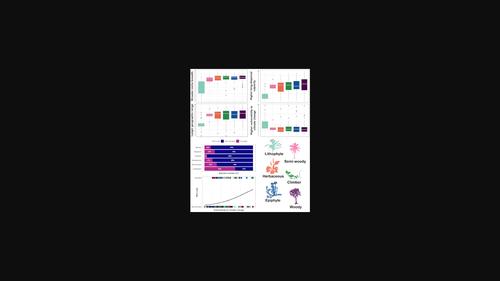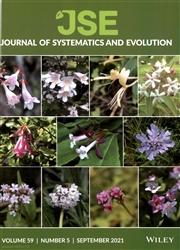Approaching inselberg biodiversity conservation through plant growth and dispersal strategies
IF 2.9
1区 生物学
Q1 Agricultural and Biological Sciences
引用次数: 0
Abstract
Climate change is promoting global declines in plant diversity, which are expected to be more critical in islands or island-like ecosystems due to environmental constraints and isolation. The species' vulnerability to climate change (VUL) depends on their ability to cope with changes or mitigate them. Therefore, we investigate the influence of growth and dispersal strategies of species from the Sugarloaf Rock Complex, Brazil, an island-like ecosystem, on their niche breadth (NB), long-dispersal (LD) capacity, and geographical range (GR). Besides, we evaluate the potential use of these strategies as indicators of species' VUL. We found that rock specialists exhibit narrower NB, lower LD capacity, and a more restricted GR when compared to other species. We also found that 63% of rock specialists are found in conservation red-lists and they are more vulnerable to climate change than woody plants. Conversely, self-dispersed plants are expected to be less vulnerable to climate change when compared to species with other dispersal mechanisms. Species vulnerable to climate change are 14 times more likely to be included in conservation red lists, and it might indicate that the species' VUL might also describe the species' vulnerability to other anthropogenic threats. Still, we suggest conservation attention on some species that are expected to be vulnerable to climate change but were not yet included in conservation red lists. We advocate for more efforts to ensure the conservation aspects of different functional groups in which inselbergs might not only offer isolation but also a refuge opportunity.

通过植物生长和扩散策略保护海岛生物多样性
气候变化正在导致全球植物多样性的减少,由于环境限制和与世隔绝,预计在岛屿或类似岛屿的生态系统中植物多样性的减少将更为严重。物种对气候变化的脆弱性(VUL)取决于它们应对变化或减缓变化的能力。因此,我们研究了巴西糖岩复合生态系统中物种的生长和扩散策略对其生态位广度(NB)、长期扩散能力(LD)和地理范围(GR)的影响。此外,我们还评估了这些策略作为物种 VUL 指标的潜在用途。我们发现,与其他物种相比,岩石专家表现出更窄的 NB、更低的 LD 能力和更有限的 GR。我们还发现,63%的岩石特化植物被列入保护红皮书,它们比木本植物更容易受到气候变化的影响。相反,与具有其他扩散机制的物种相比,自我扩散的植物受气候变化的影响较小。易受气候变化影响的物种被列入保护红色名录的几率是易受气候变化影响物种的 14 倍,这可能表明物种的 VUL 也描述了该物种易受其他人为威胁影响的程度。尽管如此,我们仍建议关注一些预计易受气候变化影响但尚未被列入保护红色名录的物种。我们主张做出更多努力,以确保不同功能群的保护,在这些功能群中,海岛不仅可以提供隔离,还可以提供避难的机会。
本文章由计算机程序翻译,如有差异,请以英文原文为准。
求助全文
约1分钟内获得全文
求助全文
来源期刊

Journal of Systematics and Evolution
Agricultural and Biological Sciences-Ecology, Evolution, Behavior and Systematics
CiteScore
7.40
自引率
8.10%
发文量
1368
审稿时长
6-12 weeks
期刊介绍:
Journal of Systematics and Evolution (JSE, since 2008; formerly Acta Phytotaxonomica Sinica) is a plant-based international journal newly dedicated to the description and understanding of the biological diversity. It covers: description of new taxa, monographic revision, phylogenetics, molecular evolution and genome evolution, evolutionary developmental biology, evolutionary ecology, population biology, conservation biology, biogeography, paleobiology, evolutionary theories, and related subjects.
 求助内容:
求助内容: 应助结果提醒方式:
应助结果提醒方式:


